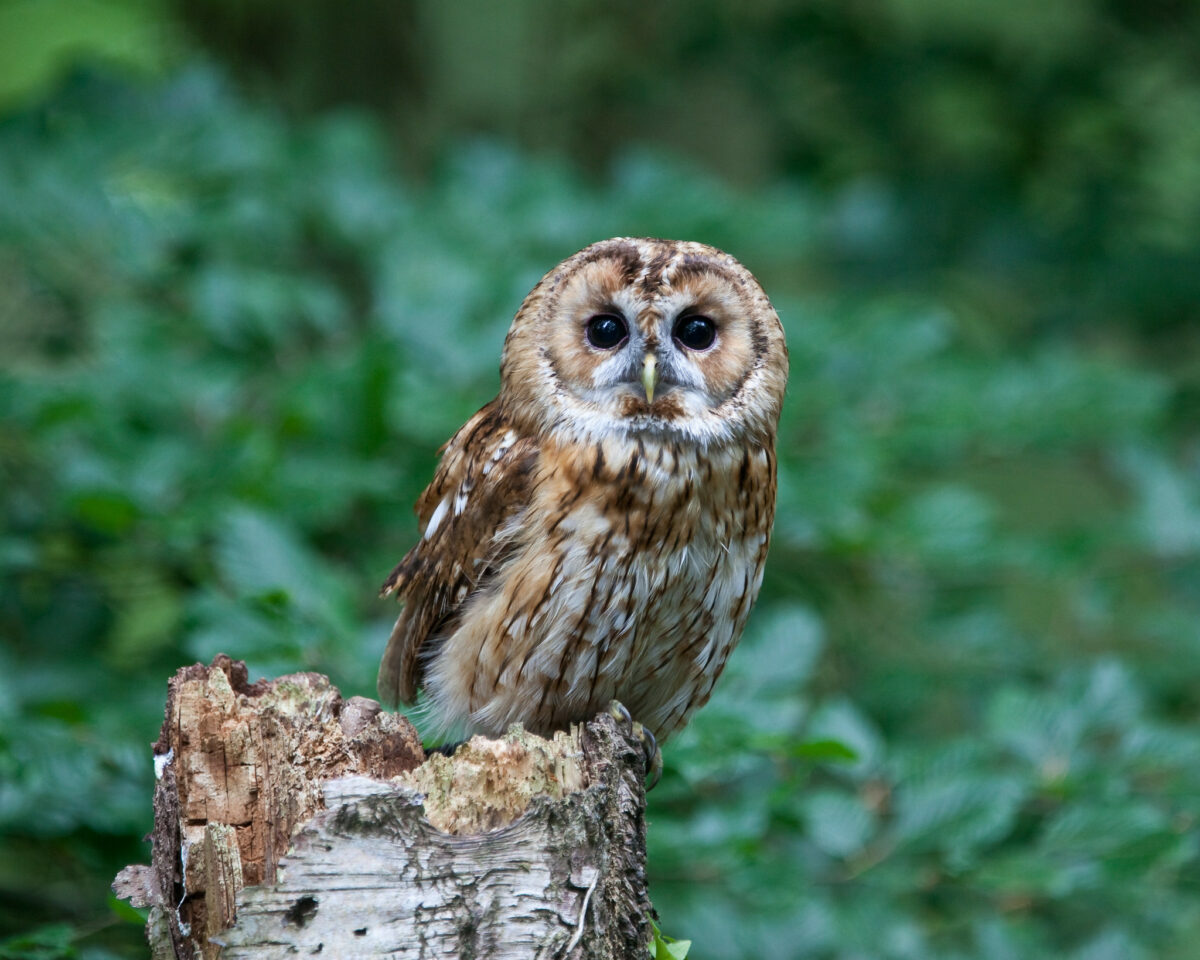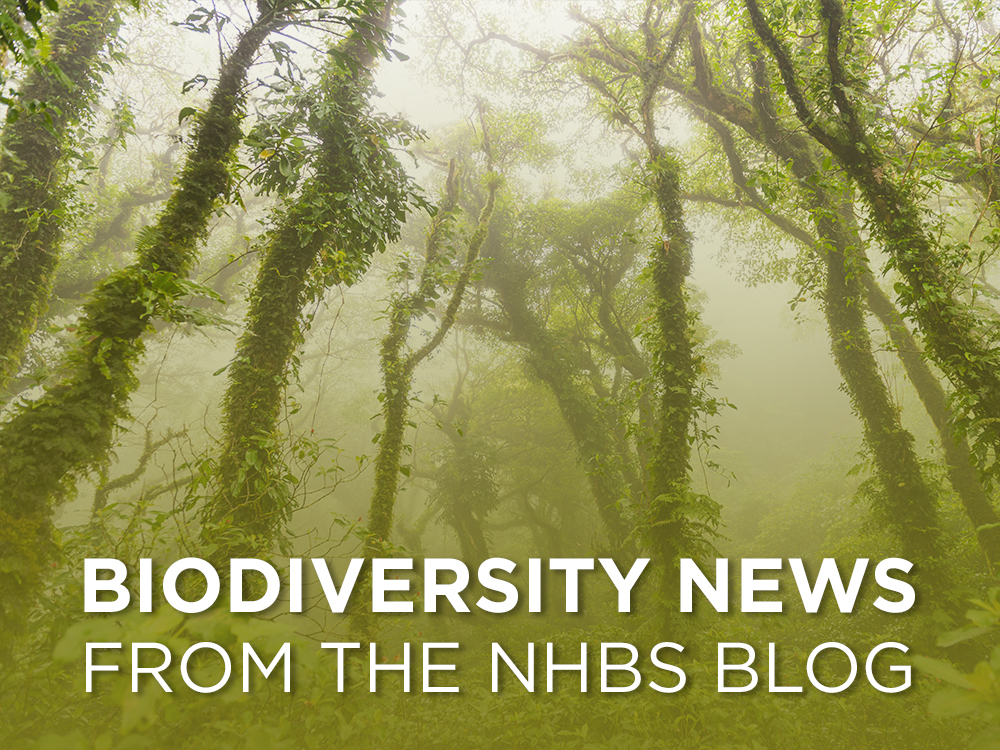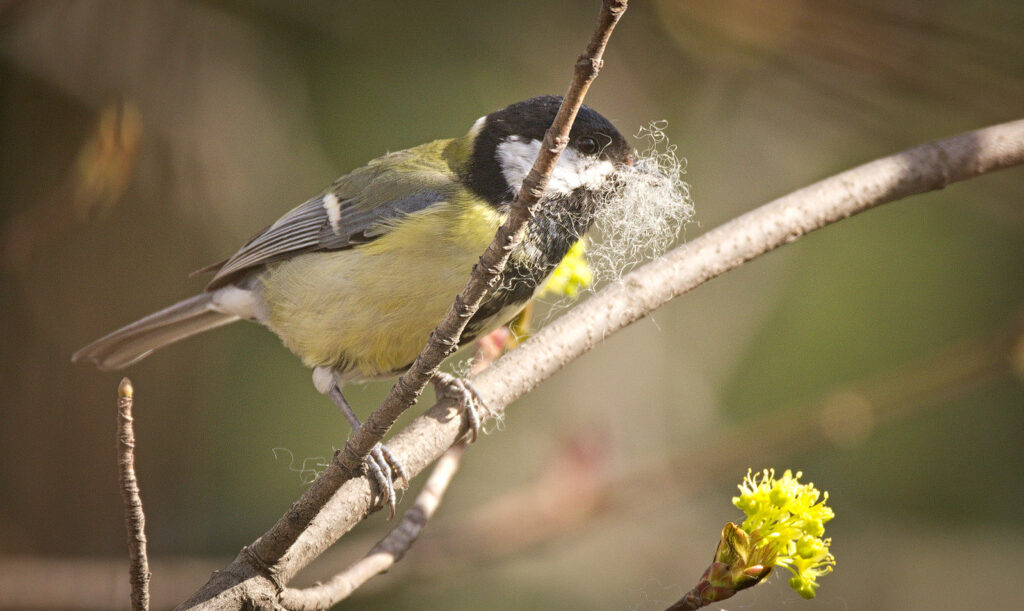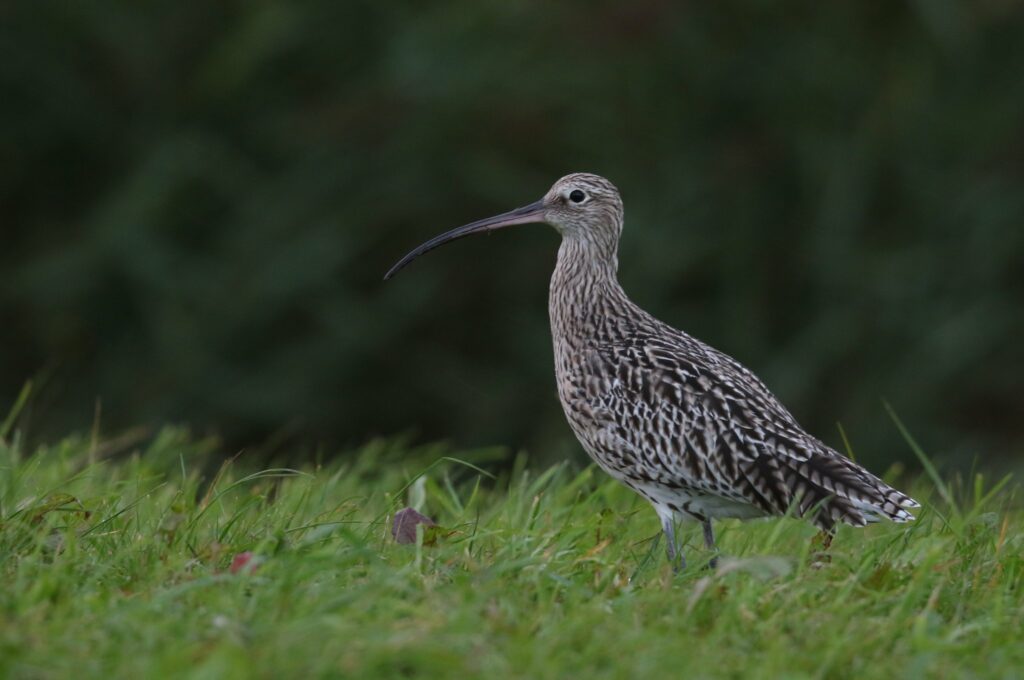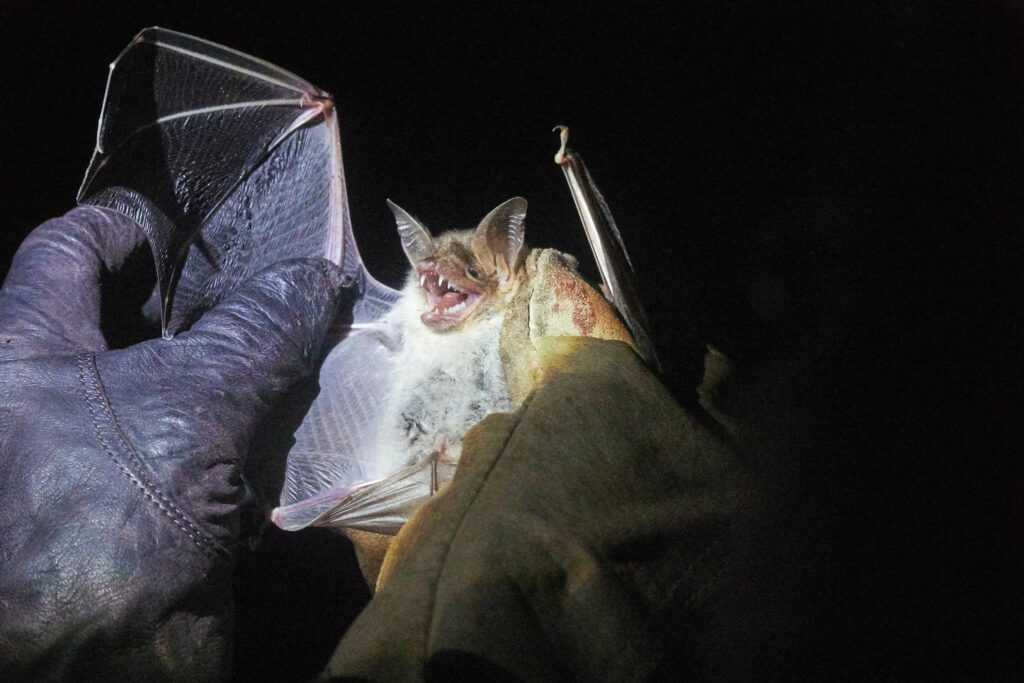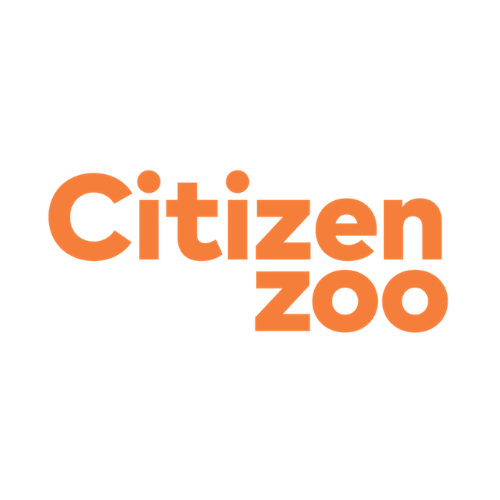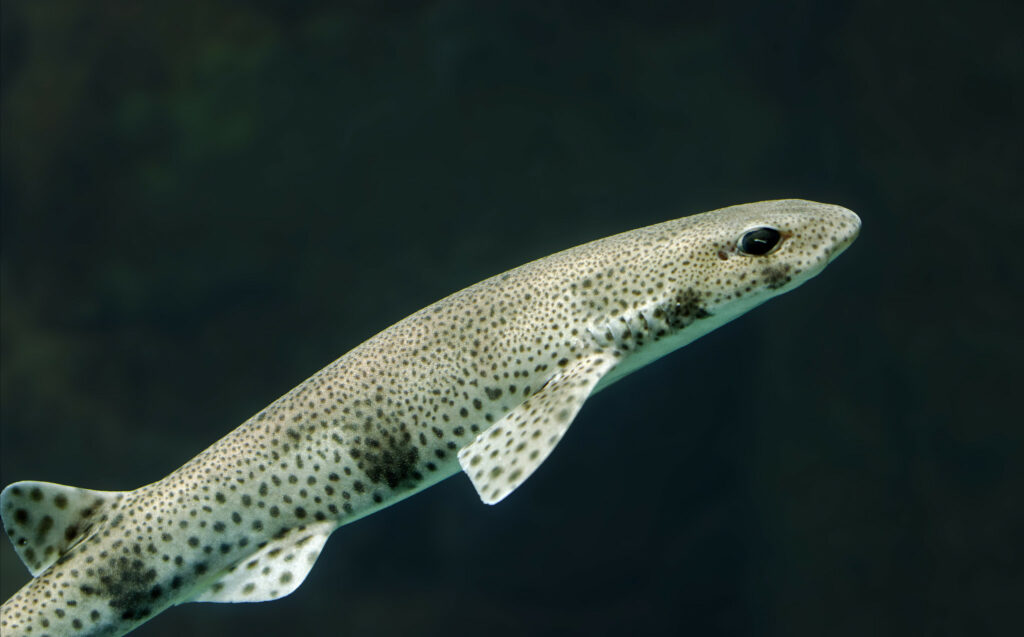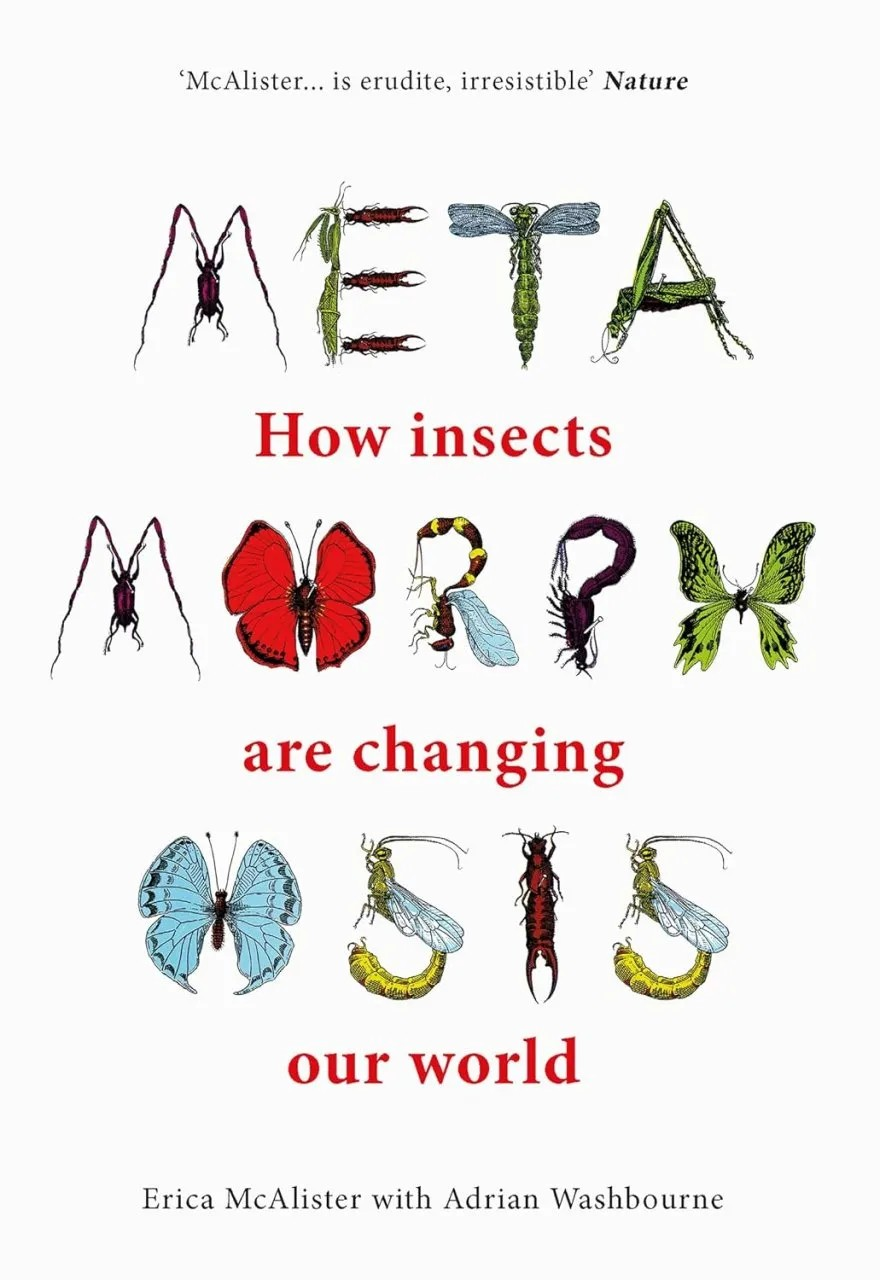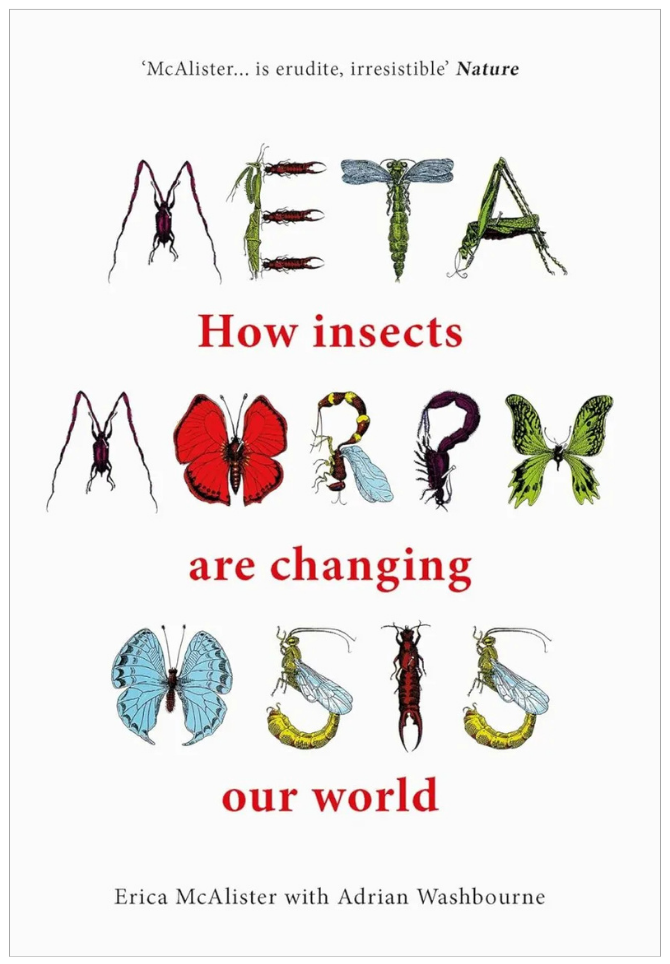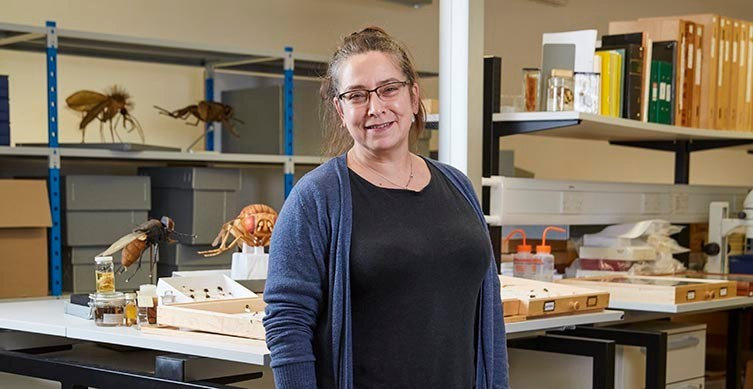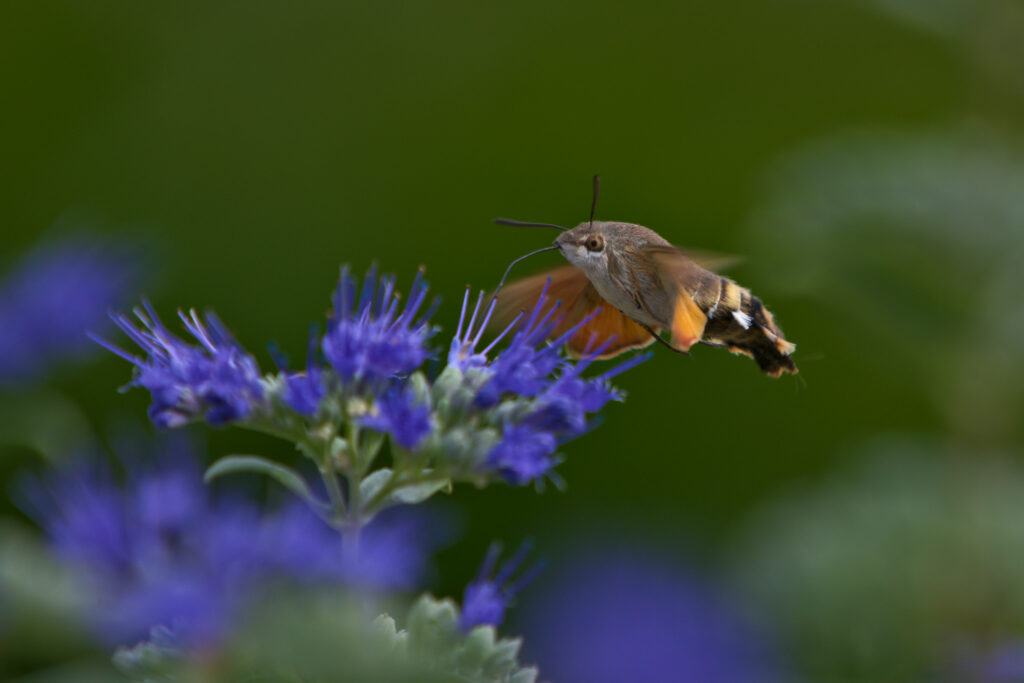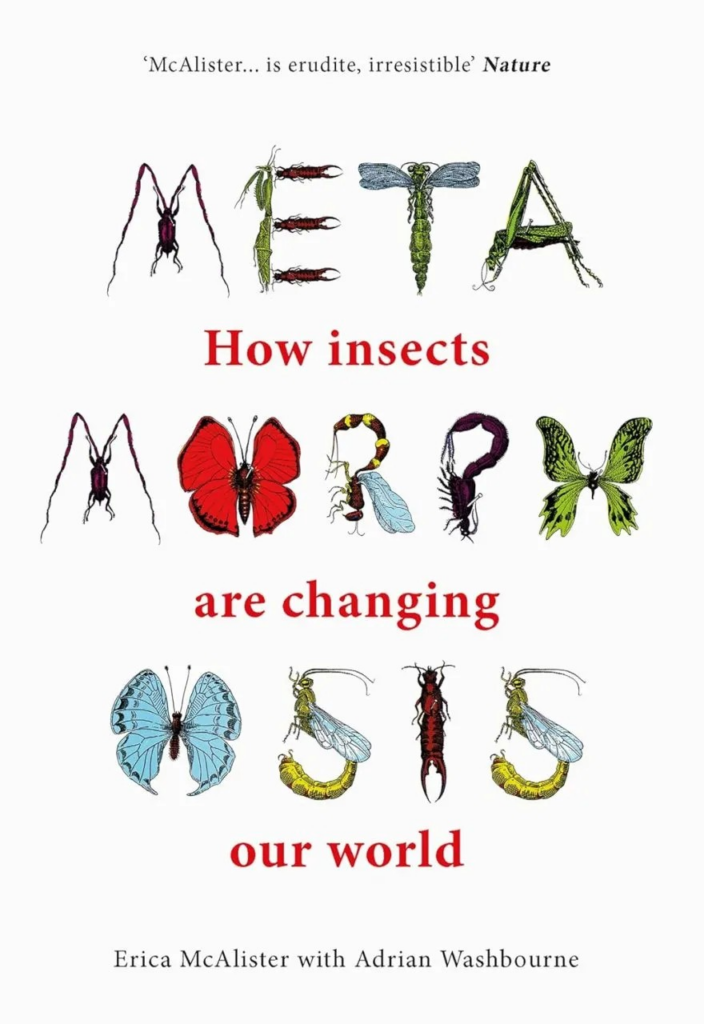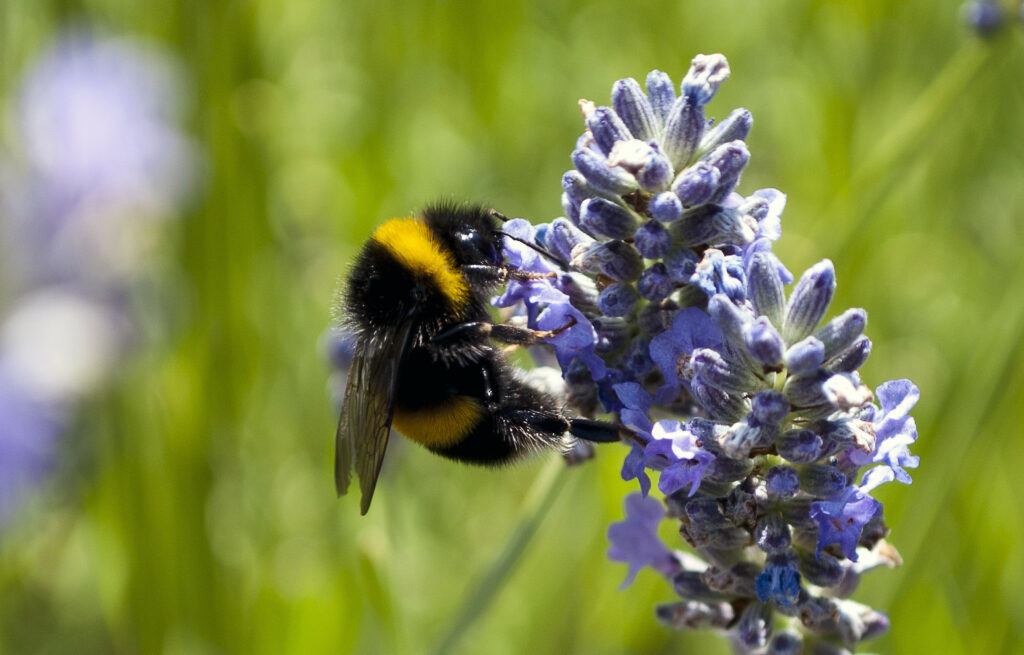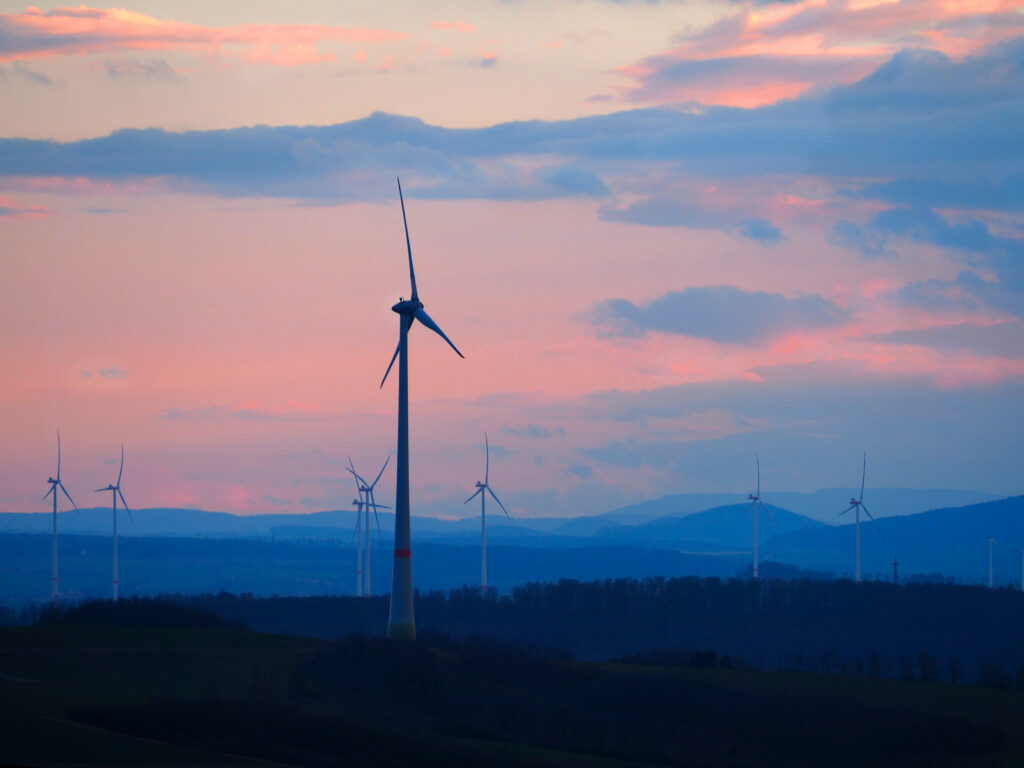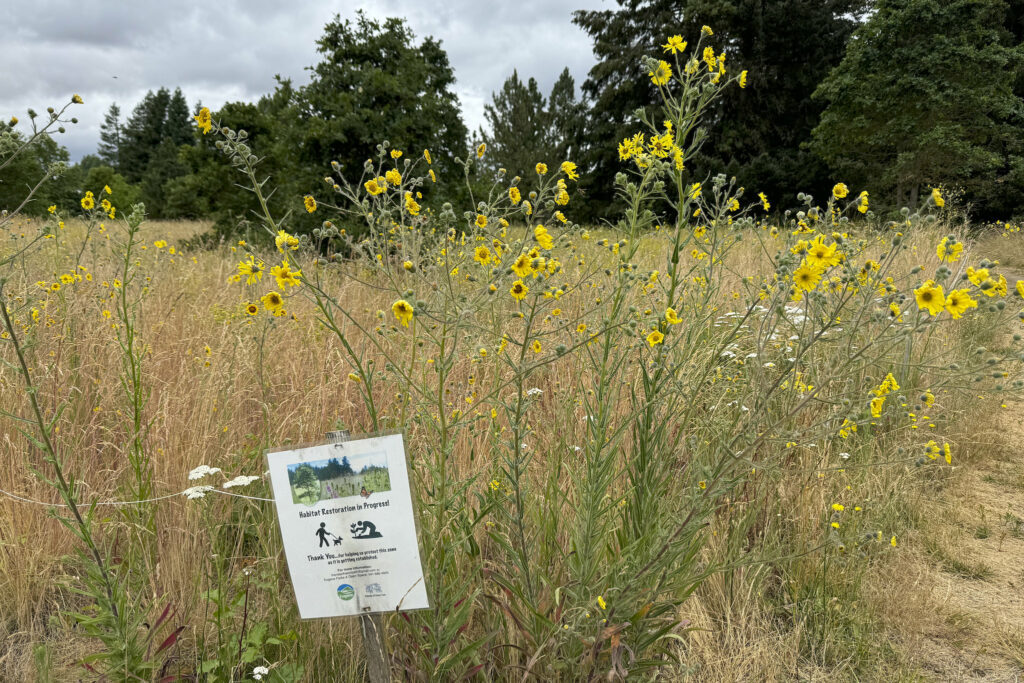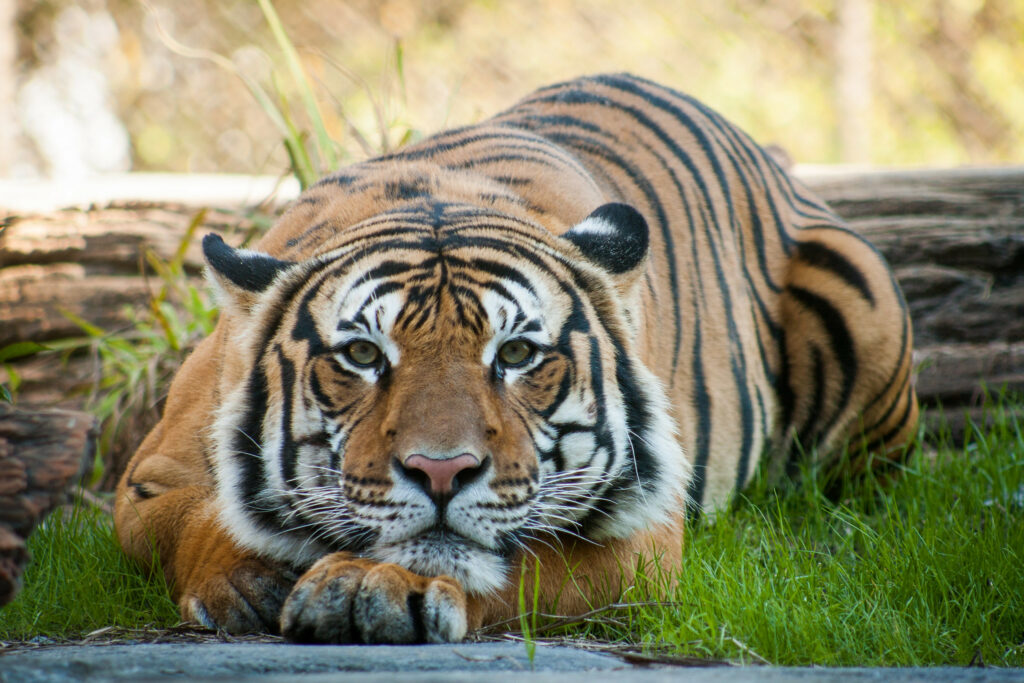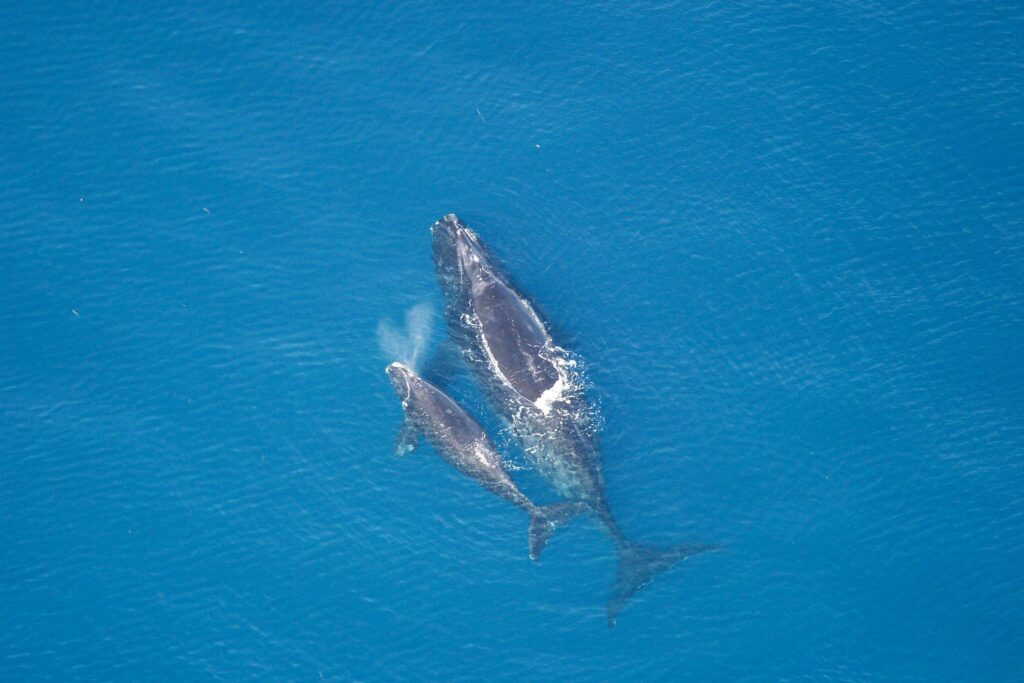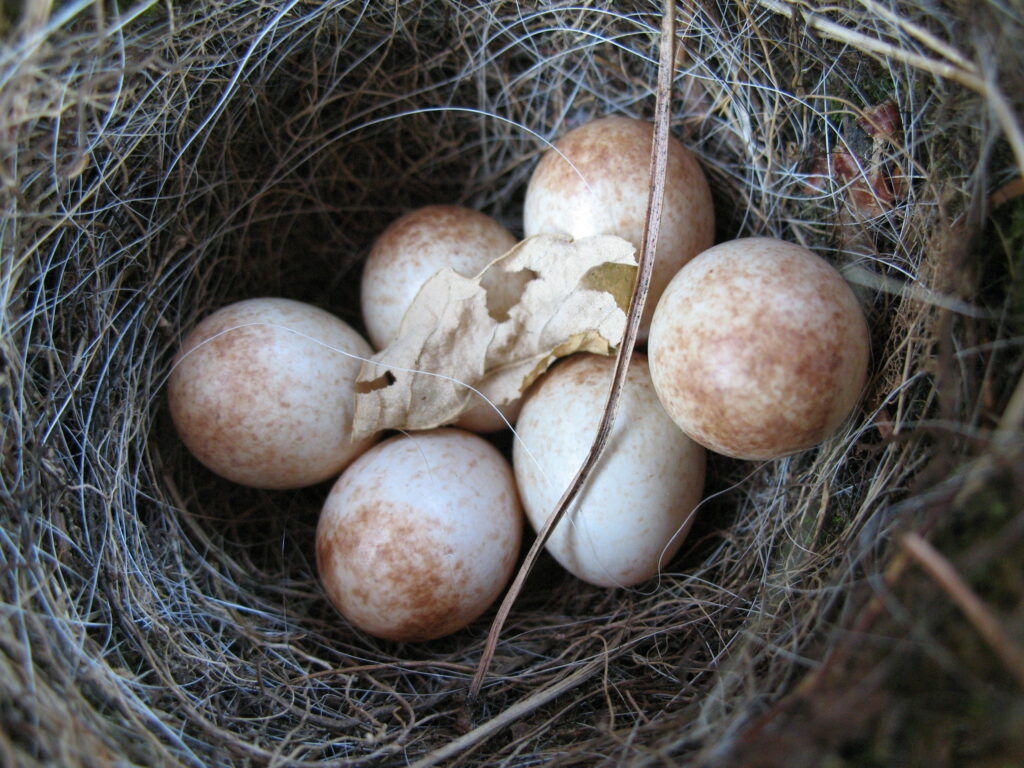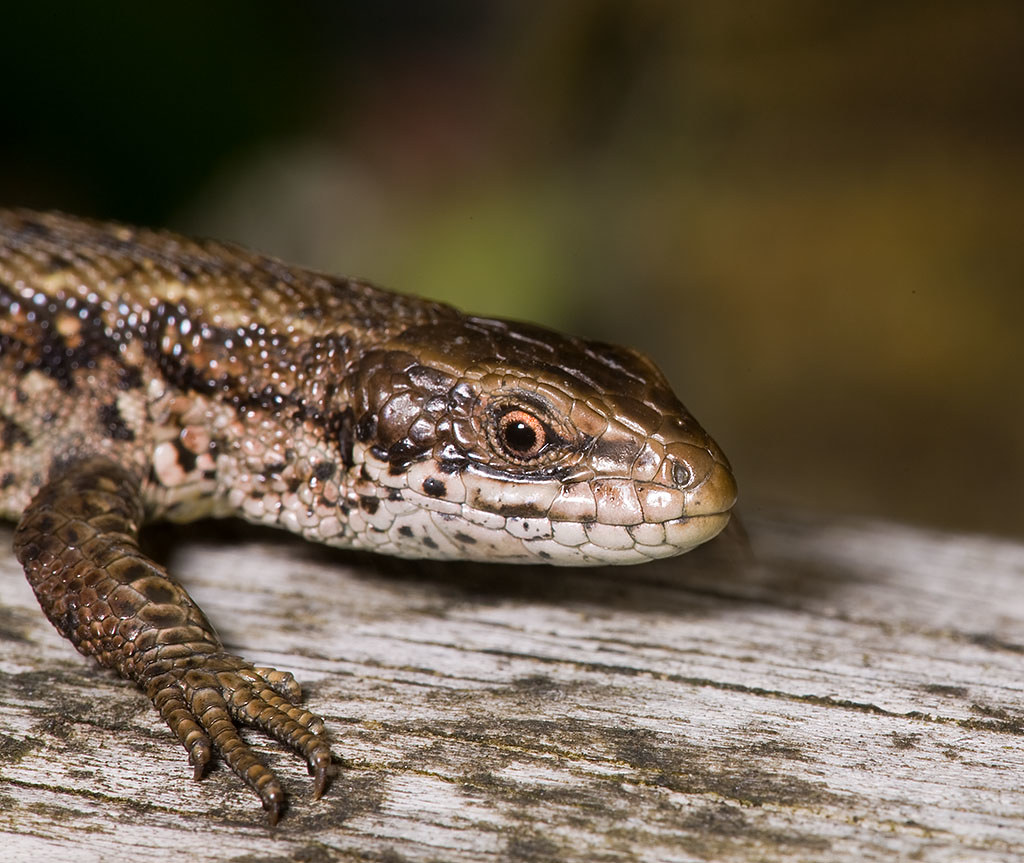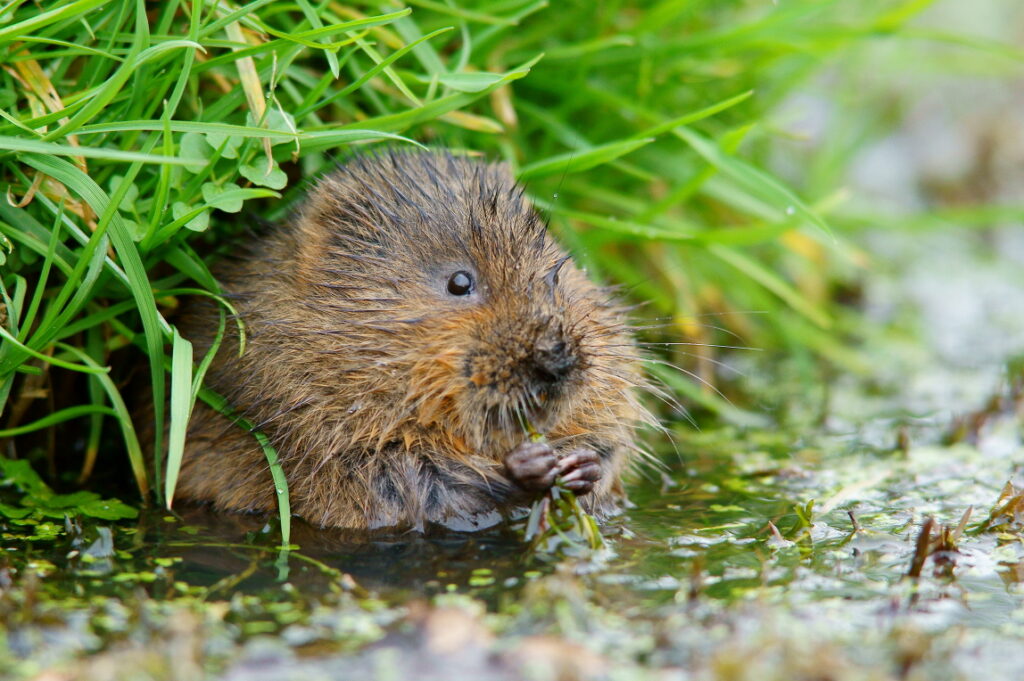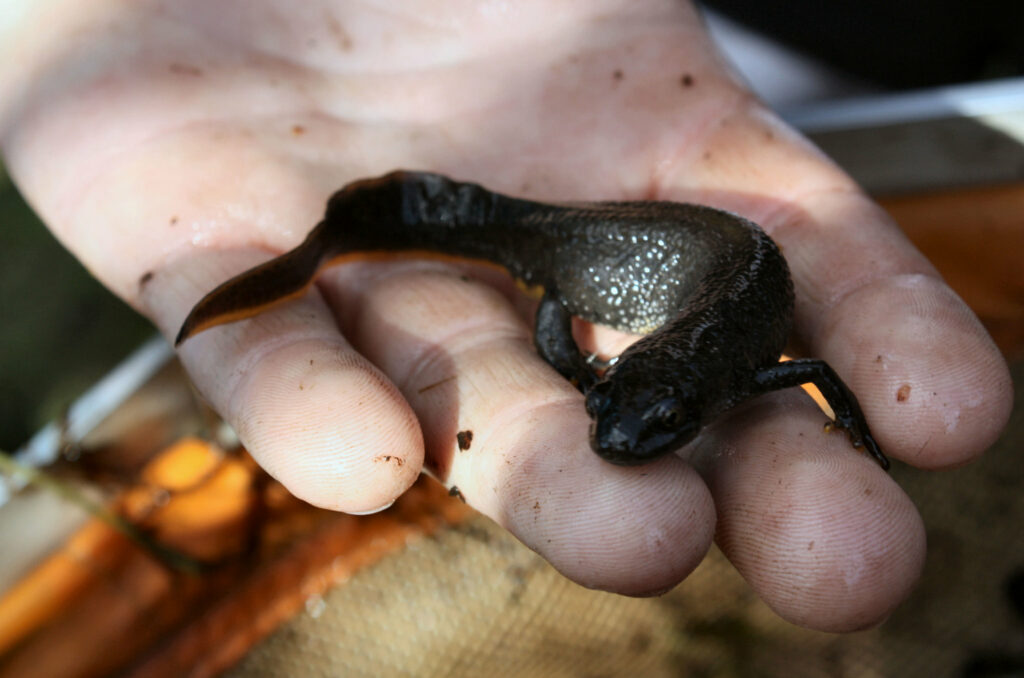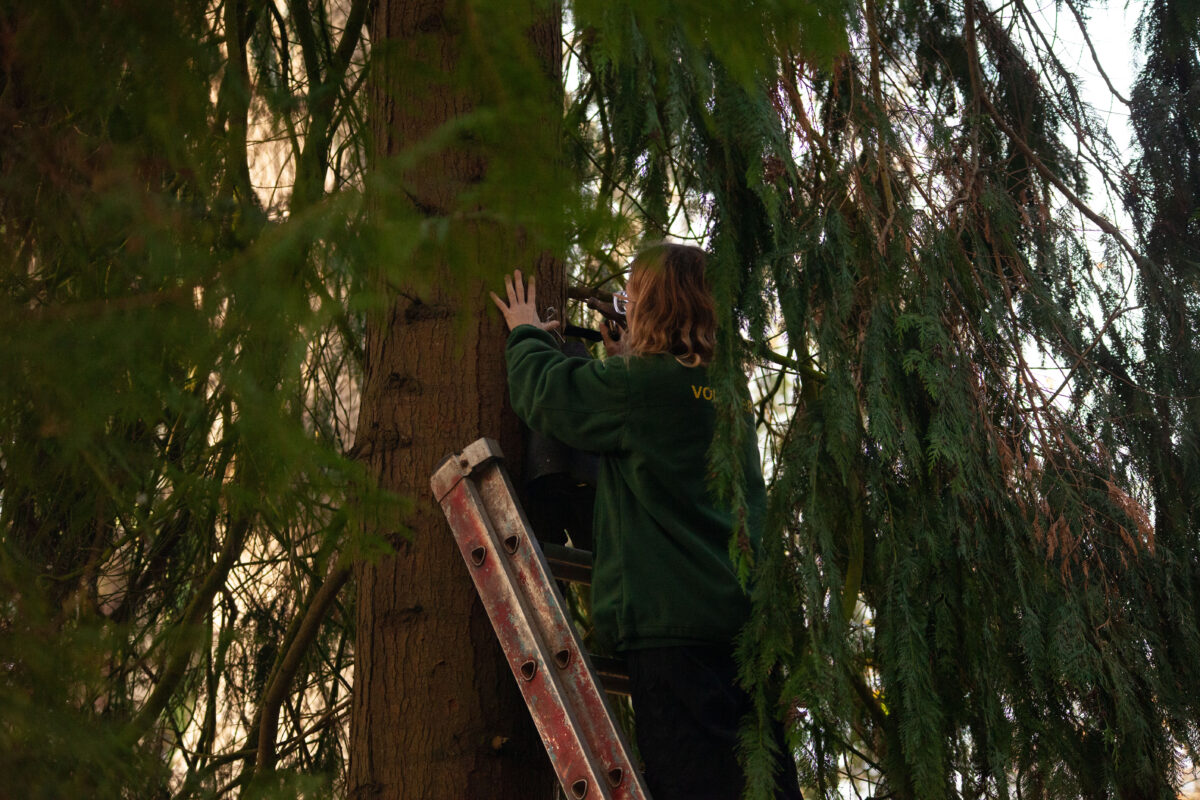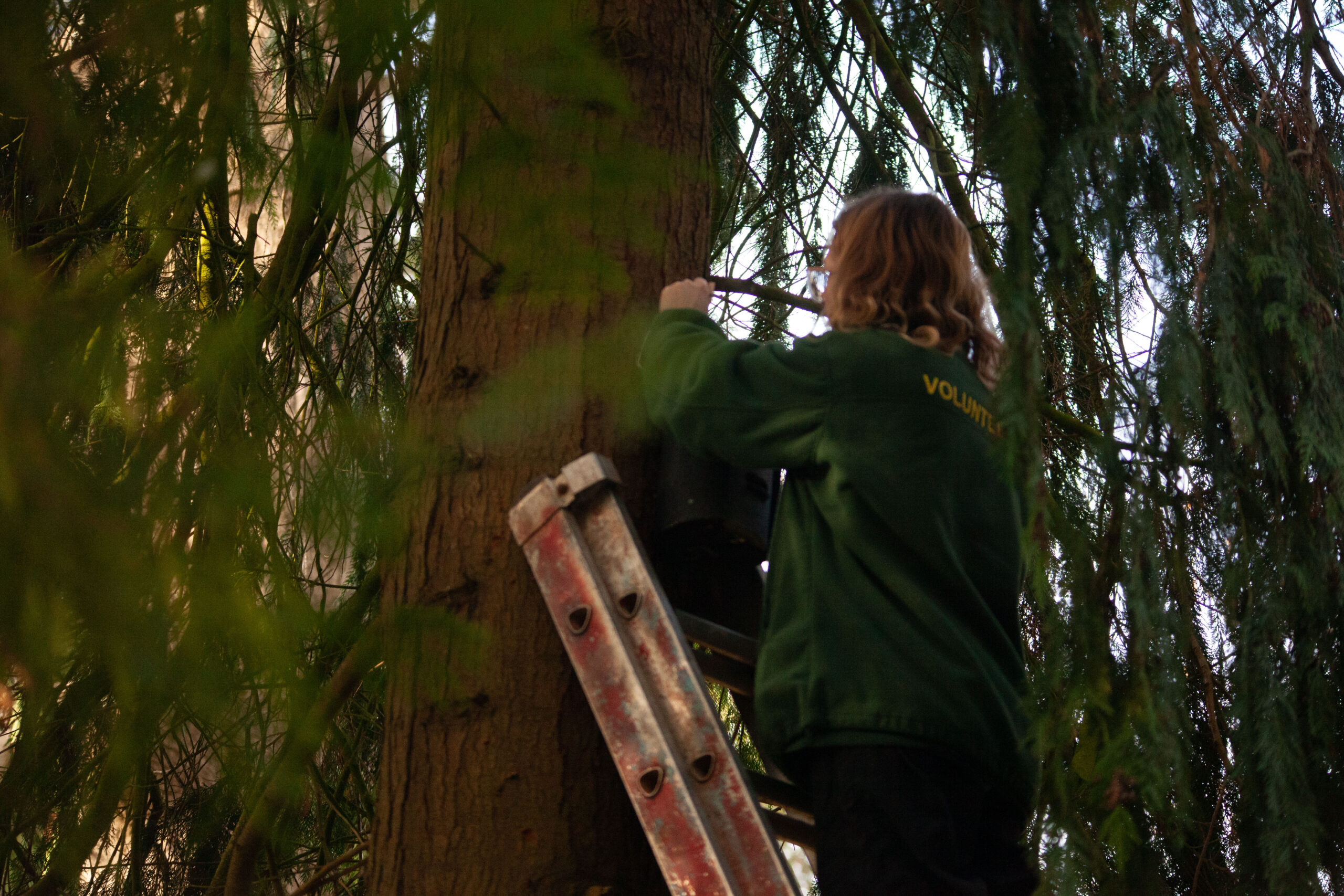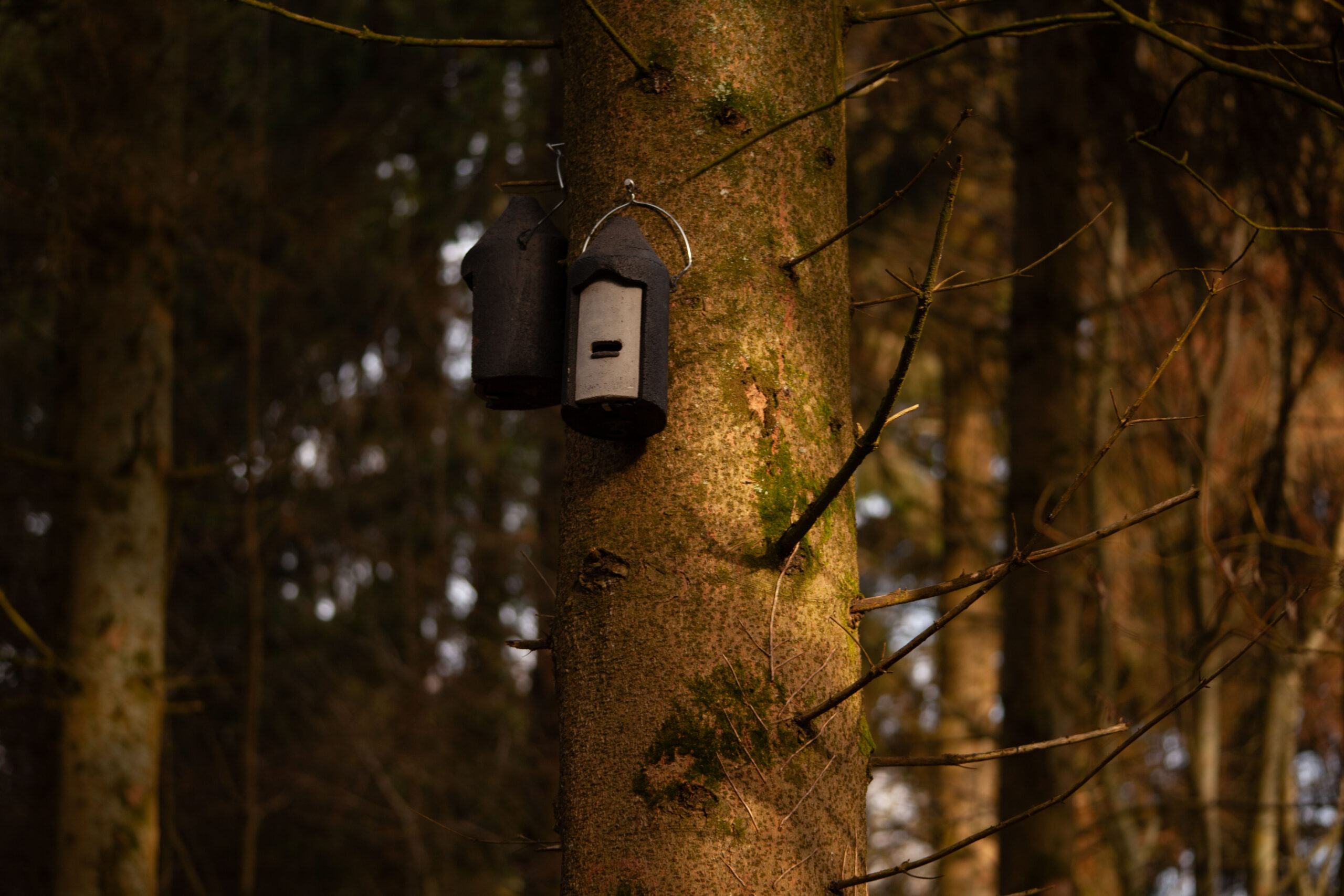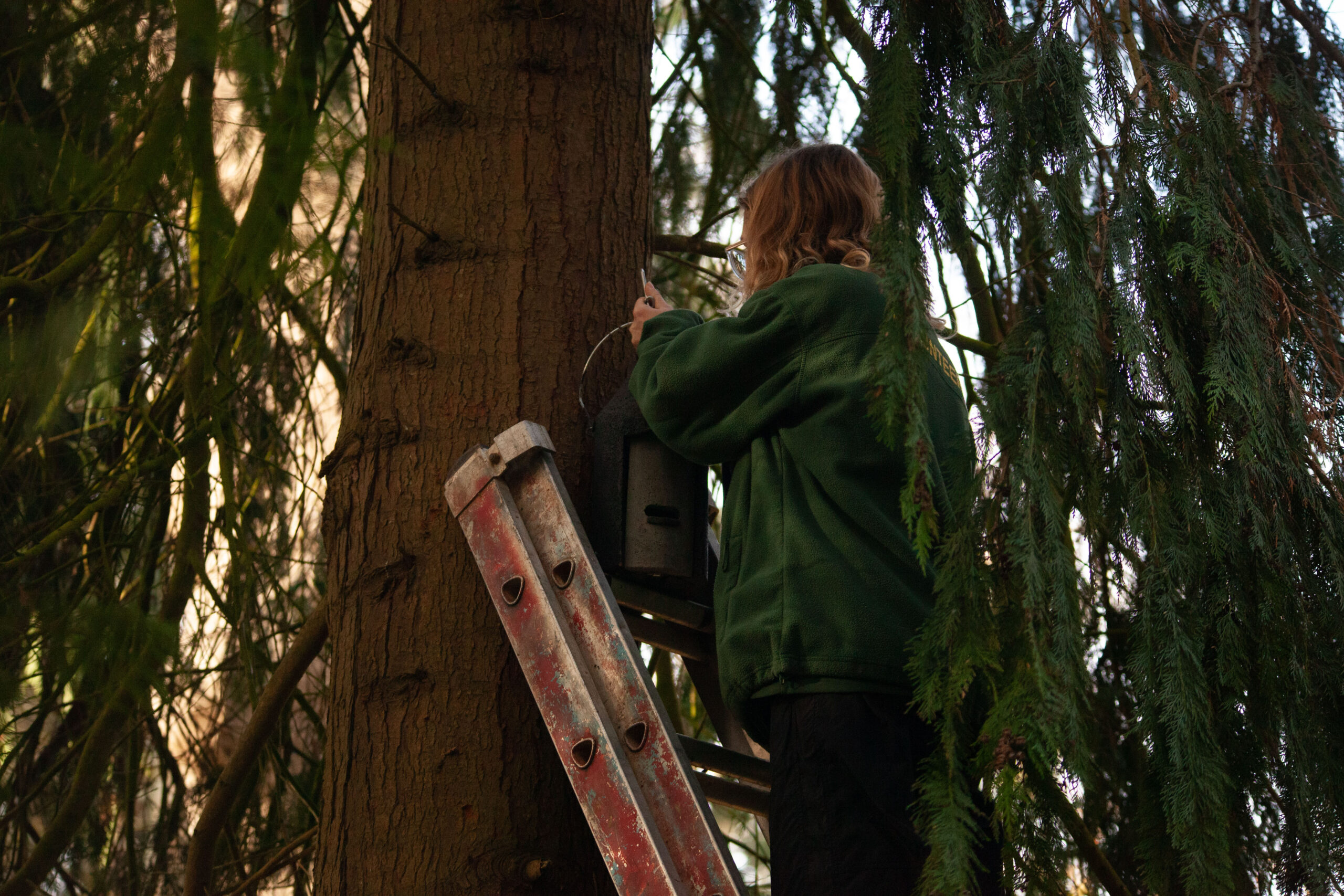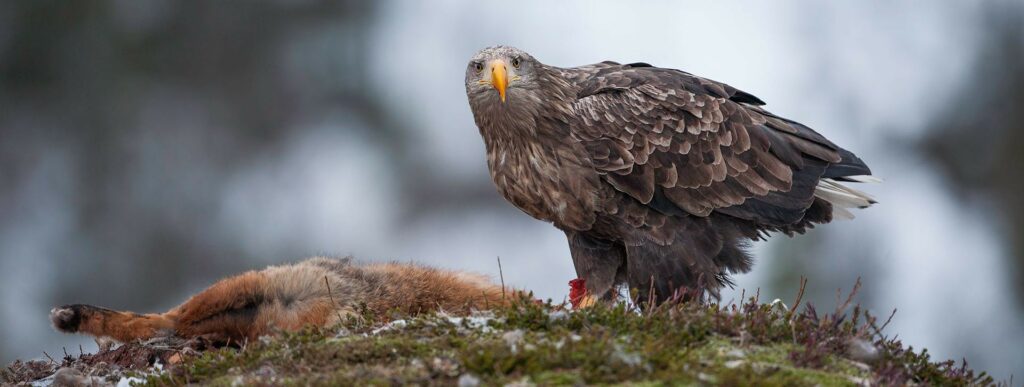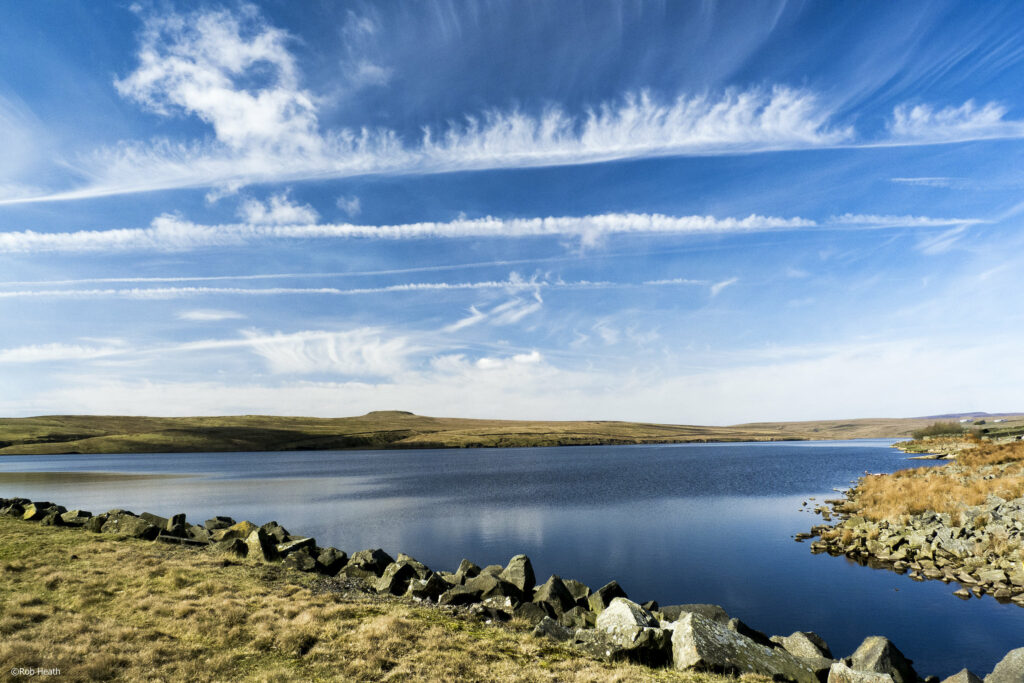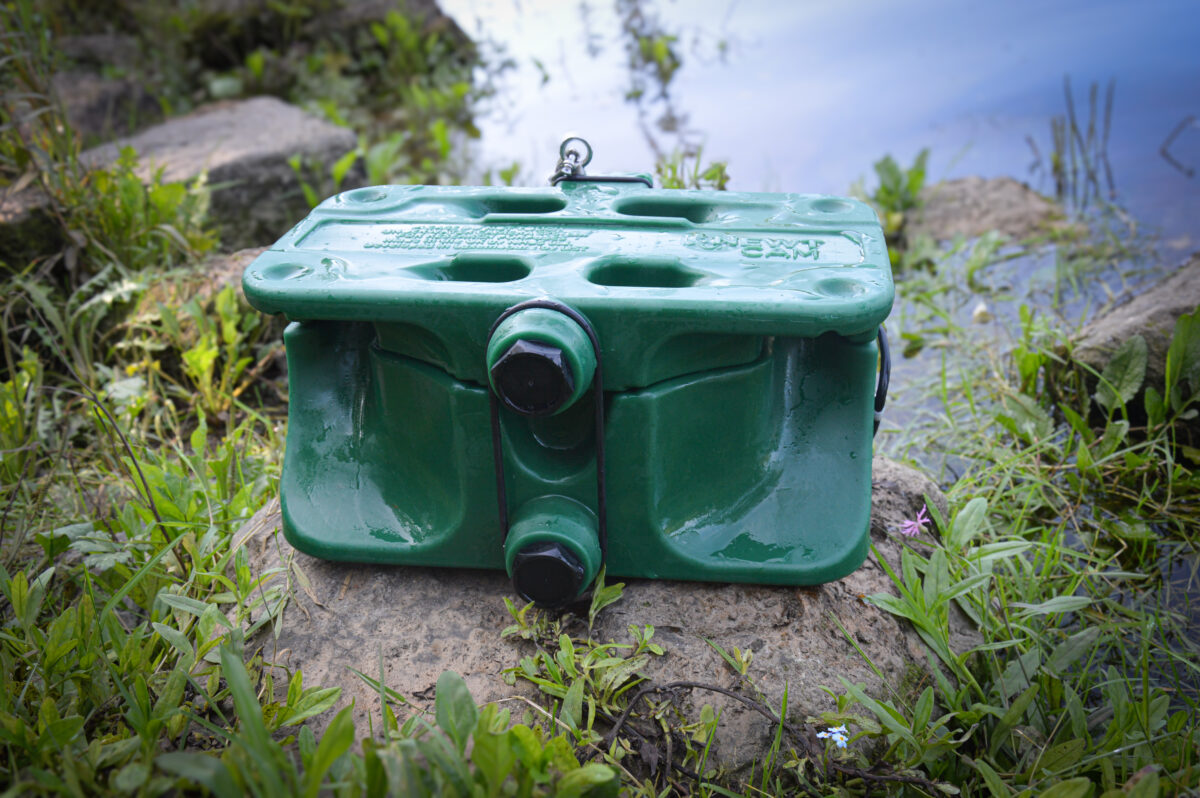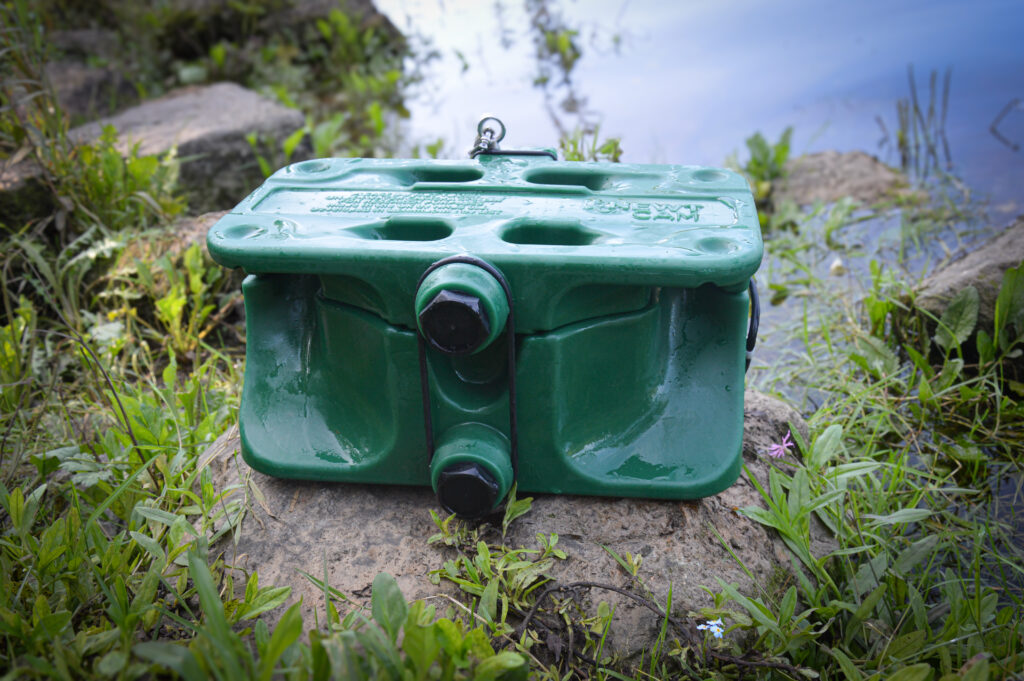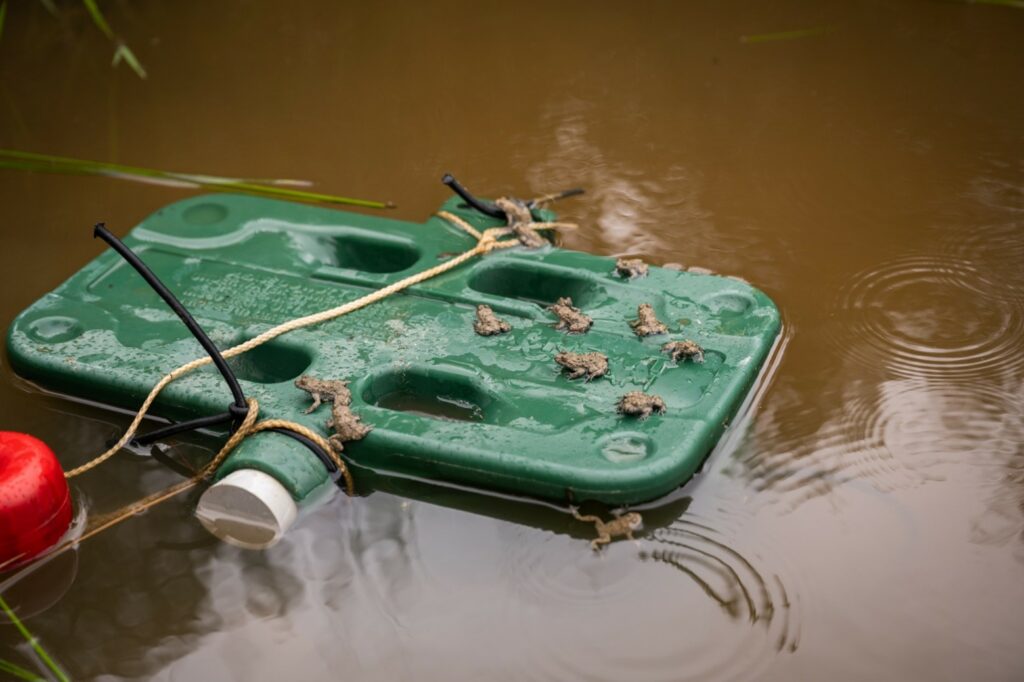The second-generation Song Meter Mini 2 and Micro 2 are the latest additions to the Wildlife Acoustics acoustic recorder range, with the Song Meter Mini 2 available in both AA and Li-Ion powered versions.
I was eager to test the new Li-Ion version of the Song Meter Mini 2, which I set up alongside the Song Meter Micro 2 in early December. The aim of this deployment was to compare the performance of the two models, and as a self-described ‘bird nerd’, I was also very excited to capture recordings of the incredible birdlife that resides on Dartmoor.
Deployment
The Song Meter Mini 2 Li-Ion model holds six rechargeable 18650 lithium-ion batteries with a minimum of one required for deployment. In this case, I used four batteries in both devices which provided ample runtime for this short field test, and I inserted a 32GB SDHC card – unfortunately, I did not have access to a battery charger so the Song Meter Mini 2 began the deployment at 57% battery life. I set up the recorders in a rural Dartmoor village hoping for clear recordings.
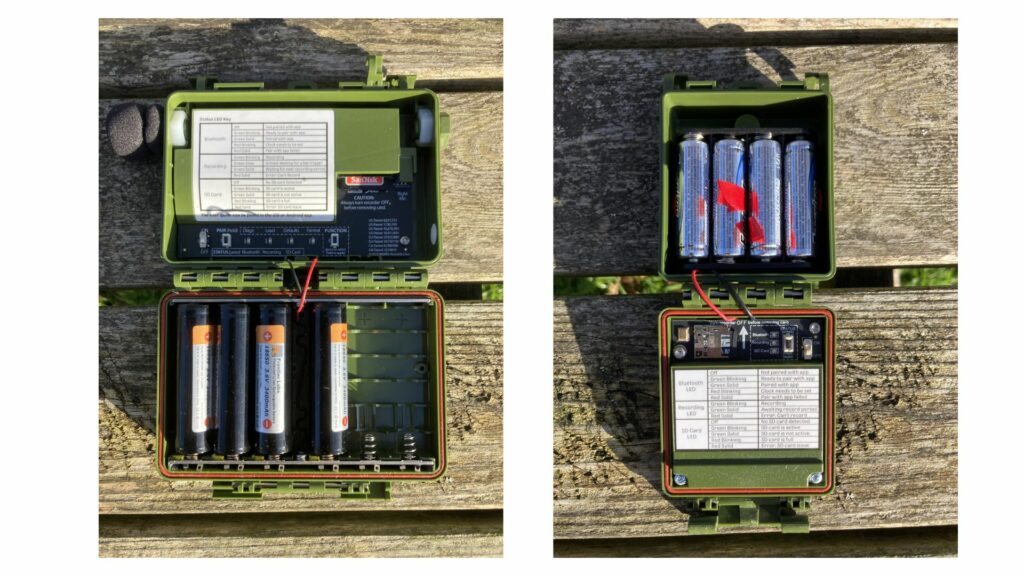
One of the main strengths of Wildlife Acoustic’s recorders is their simple deployment and configuration using the free Song Meter app. Here you can select your preferred recording schedule and check the status of your recorder at any time while in Bluetooth range – this provides information on SDHC card capacity, battery life, recording mode, and number of recordings taken. For this deployment, I used a pre-set recording schedule to record birds for two hours around sunrise and sunset.

Both models now feature cable lock holes so that they can be safely secured during deployment – using a Python Lock, I fixed the device to a tree and left it to record for two days.
Results
Over 2 days, I had collected 33 recordings on each device. Both devices had ample battery life remaining and had used just 1.75GB of storage.

I analysed the recordings with a fantastic free desktop software called Chirpity. Using the BirdNET model, this software has an auto ID feature which simplifies analysis of sound recordings, particularly for large data sets. Using this software, I was able to identify a wide variety of garden bird calls including Robins, Blue Tits, Tawny Owls and many more. Examples of the dawn chorus from each device can be heard below.
Dawn chorus recording on Song Meter Mini 2 Li-Ion.
Dawn chorus recording on Song Meter Micro 2.

Product Comparison
Both devices are impressive recorders in their own right – they produced clear and extensive recordings that captured a fantastic snapshot of the surrounding soundscape. On paper, the most obvious difference between these two recorders is the price, with the Micro 2 being much more affordable than the Mini 2-Li-Ion (@less than 1/3 of the price).
Furthermore, the Micro 2 is around half the size of the Mini 2-Li-Ion, its compact design is hard not to be impressed by, and it can fit easily into a pocket. Despite its small size, the Micro 2 features an incredible sample rate of 256kHz which allows you to capture good-quality high frequency recordings.
However, what you gain in compactness you lose in battery life. The Micro 2 has an estimated runtime of 280 hours compared to the Mini 2-Li-Ion which has a whopping 1,330-hour run time. The Micro 2 was deployed with a fully charged battery and finished with 76% battery life. Comparatively, the Mini 2-Li-Ion started and finished at 57%, an impressive feat.
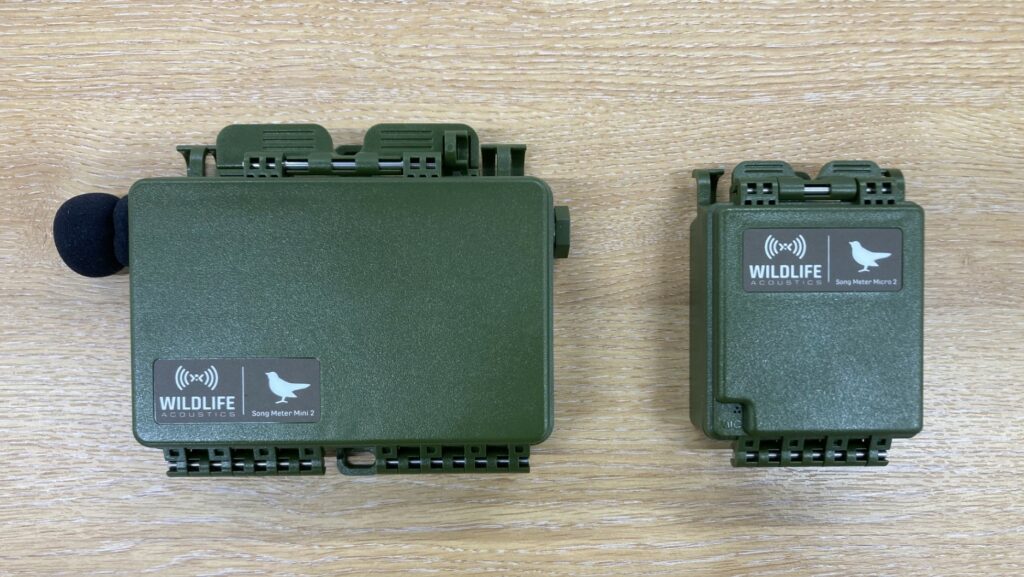
Another key difference between these recorders lies within environmental noise. These devices were deployed in the run-up to Storm Darragh, and some of the recordings experienced a good deal of wind distortion. Although this is an extreme case, it served to highlight the difference a windshield makes. The Micro 2 has no windshield over the microphone and as a result, experienced markedly more distortion when compared to the shielded Mini 2-Li-Ion. This can be seen in the spectrograms below, which were taken simultaneously. The Mini 2-Li-Ion also has the advantage of a low-noise microphone which, to my ear, produces slightly clearer recordings compared to the Micro 2.


Summary
While both recorders allow you to experience the surrounding soundscape in new ways, they each offer distinct functionalities to achieve this goal.
The compact design of the Song Meter Micro 2, along with a recent price drop, makes this recorder a fantastic choice for enthusiasts who want to delve into bioacoustics. It has an excellent sample rate, good battery life and produces crisp recordings that are a joy to listen back to.
In comparison, the Song Meter Mini 2-Li-Ion is perfect for researchers. Its improved battery life makes it an excellent choice for both short and long-term deployments, and the low-noise microphone and windshield are ideal at producing clear recordings for subsequent analysis.

